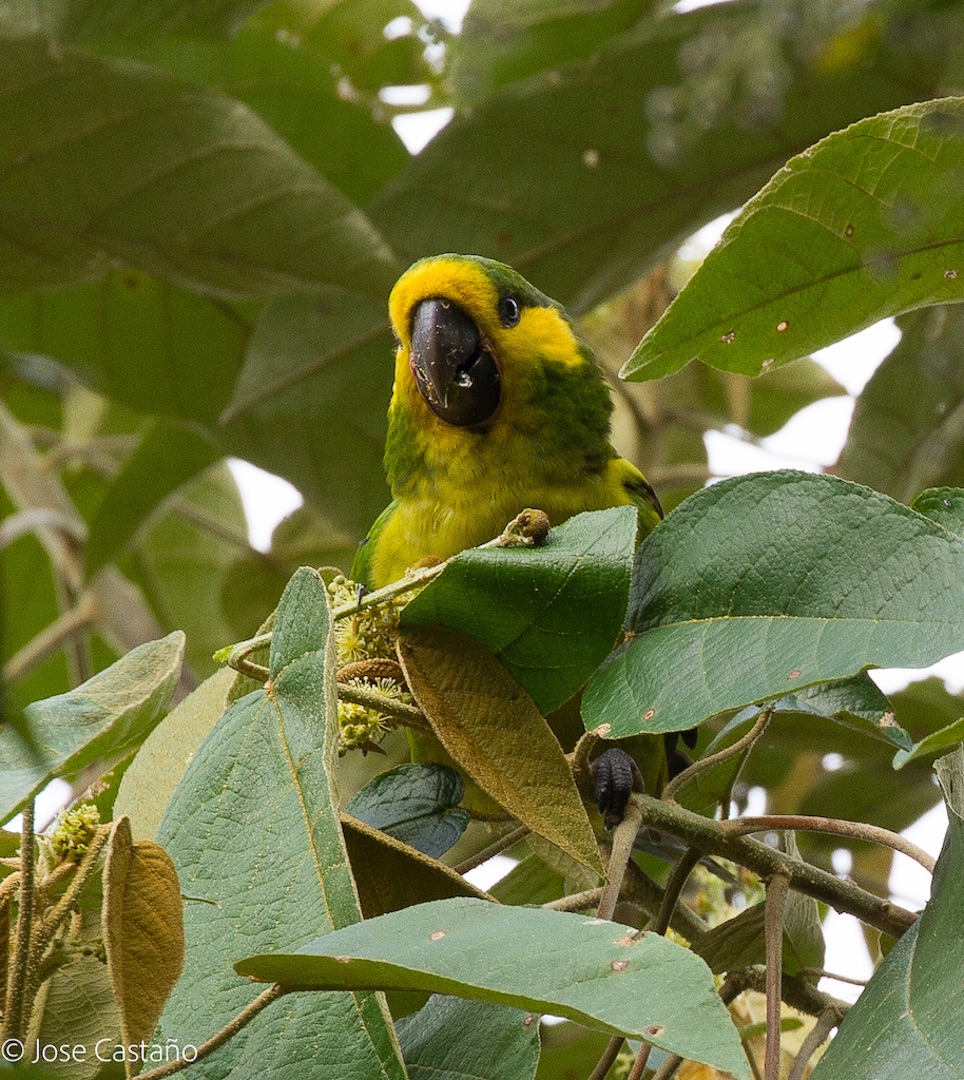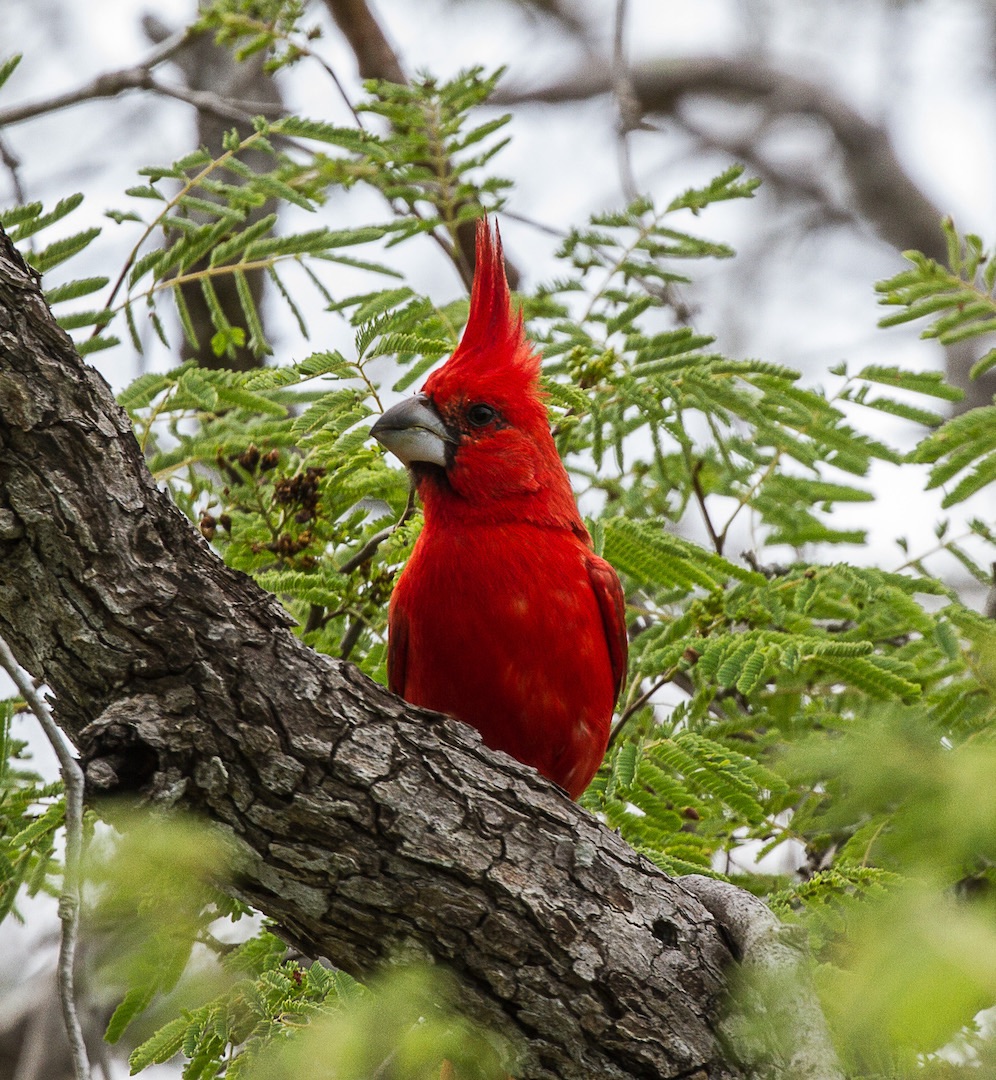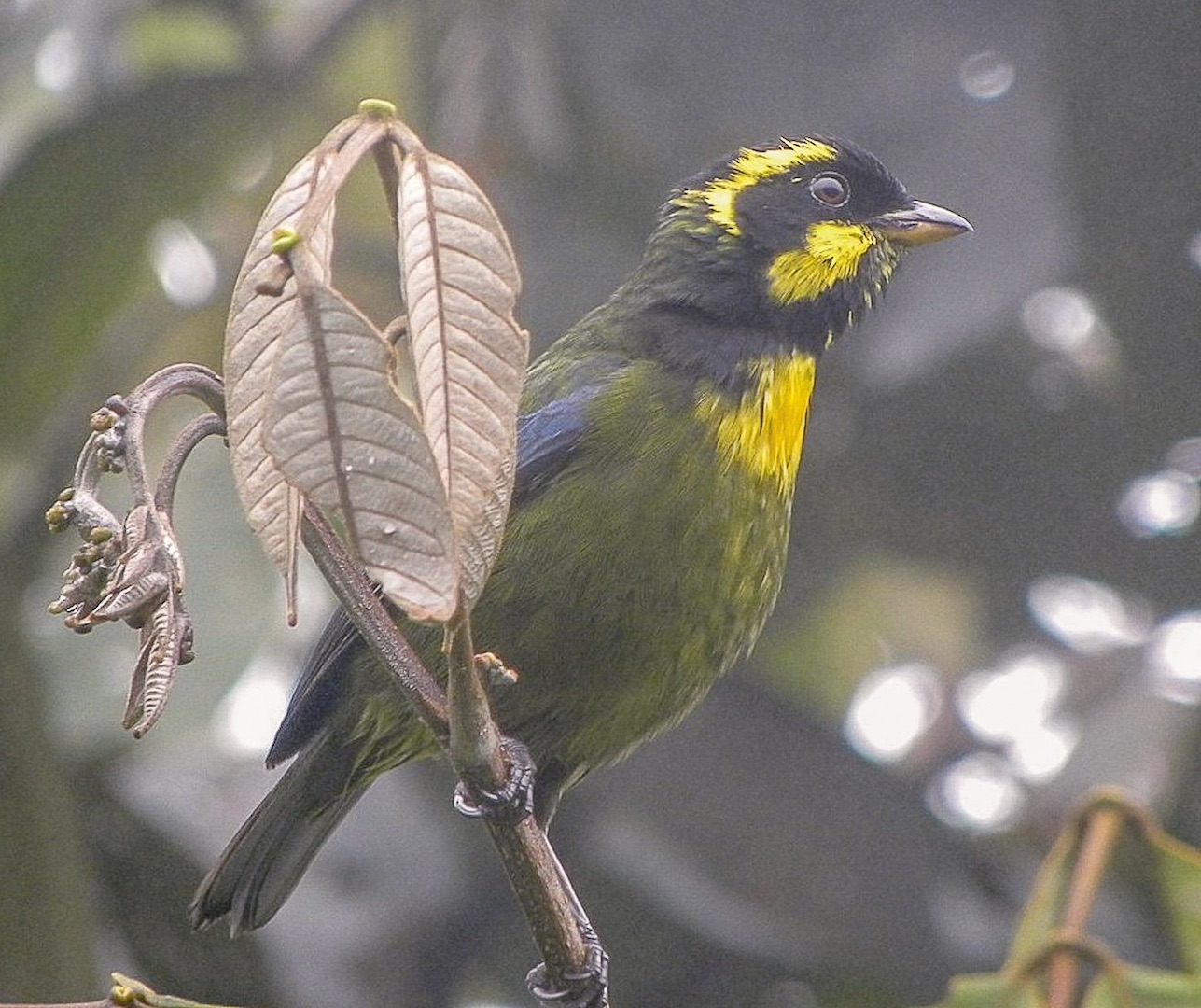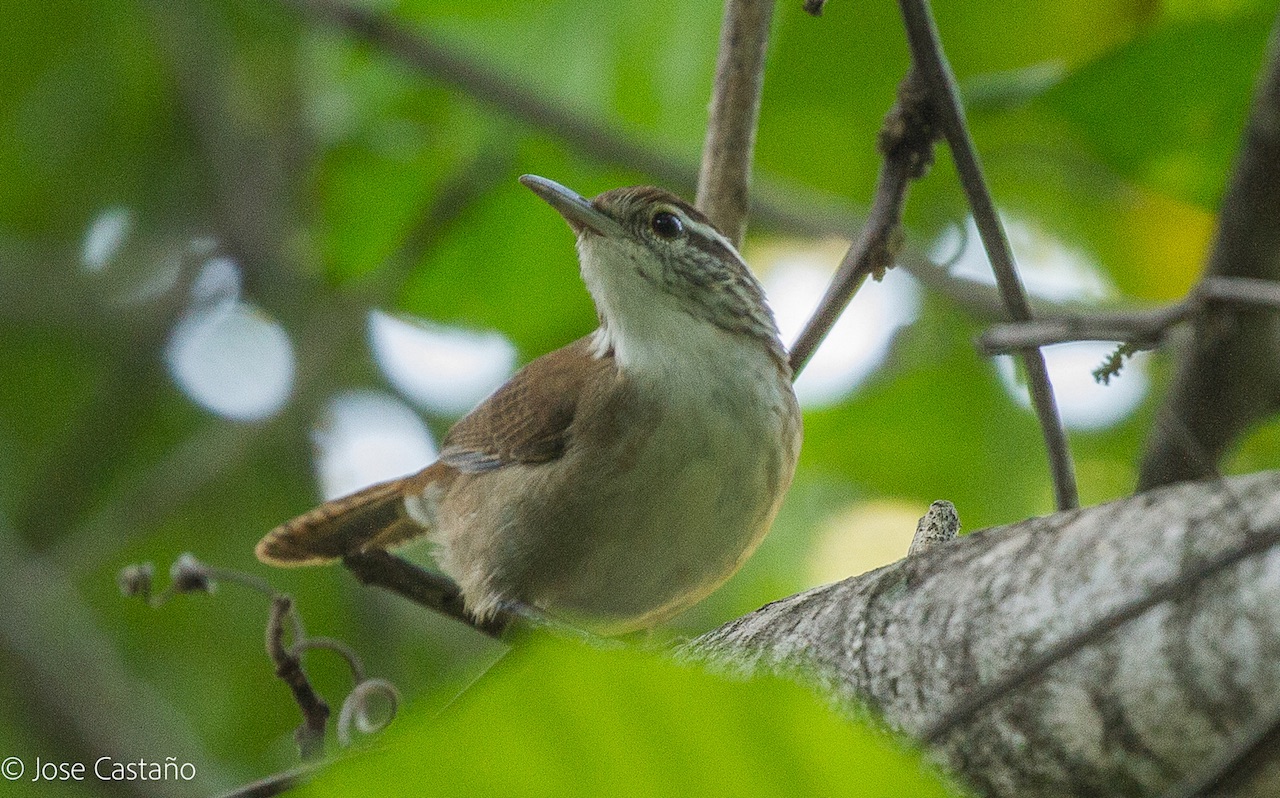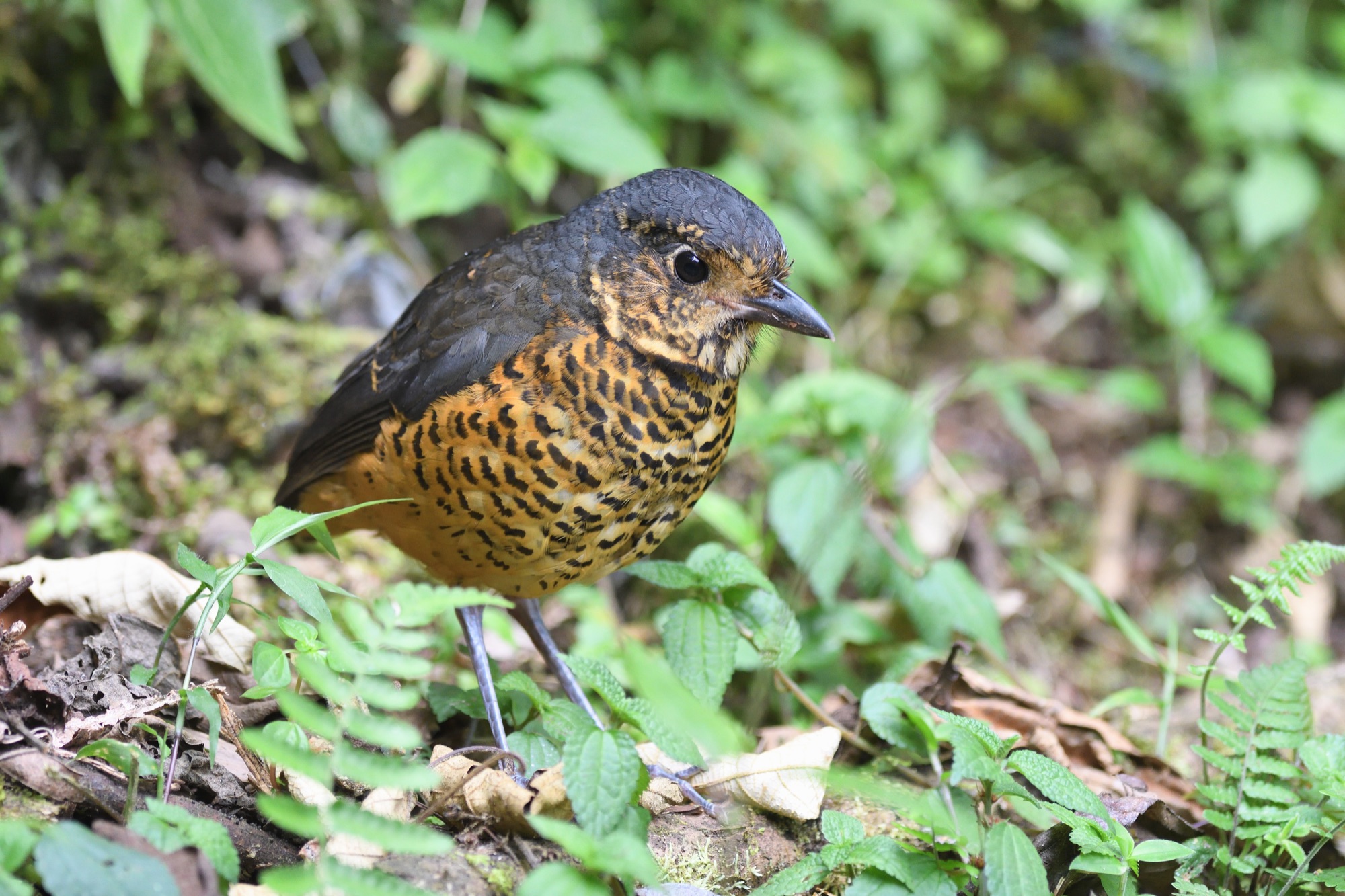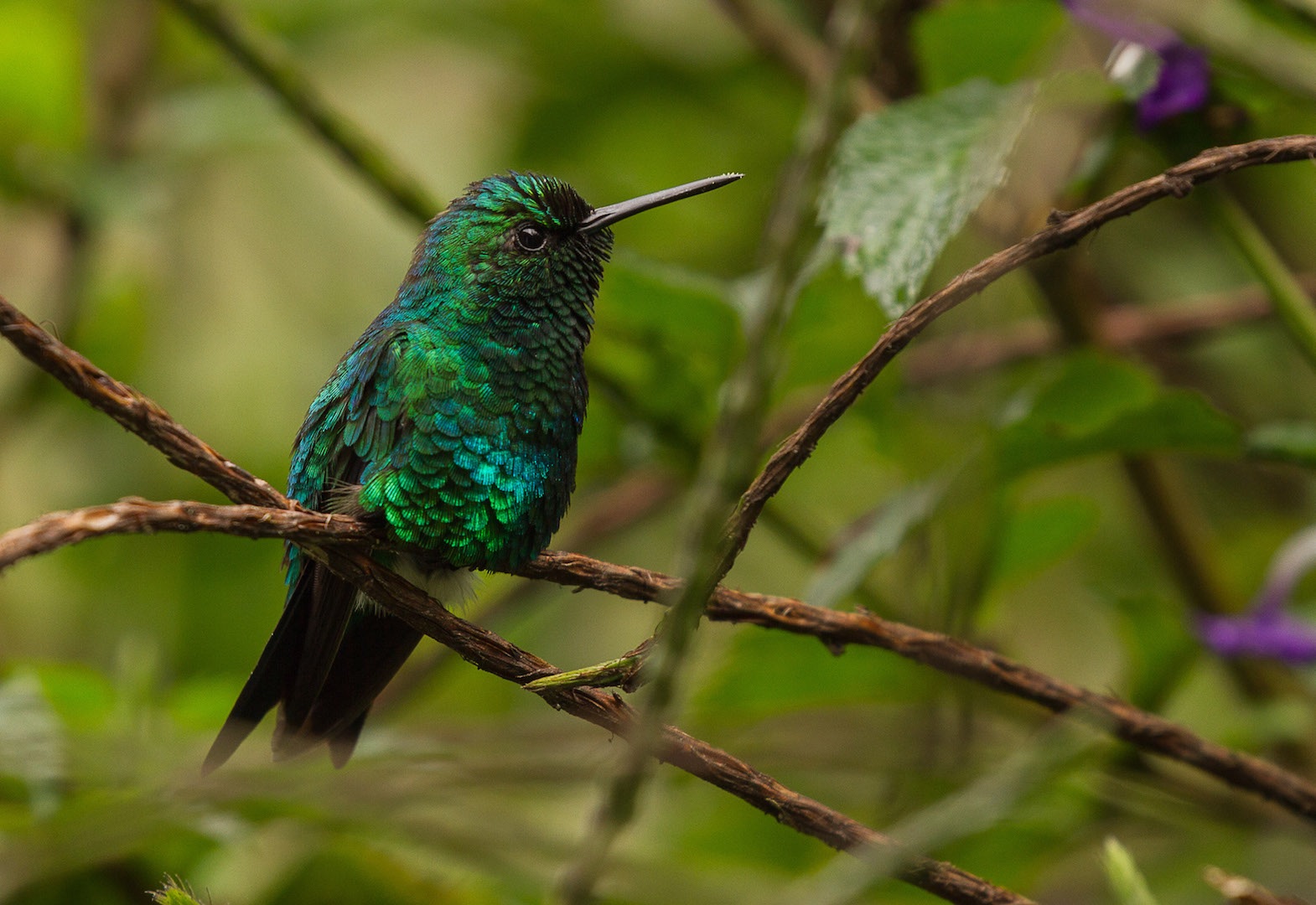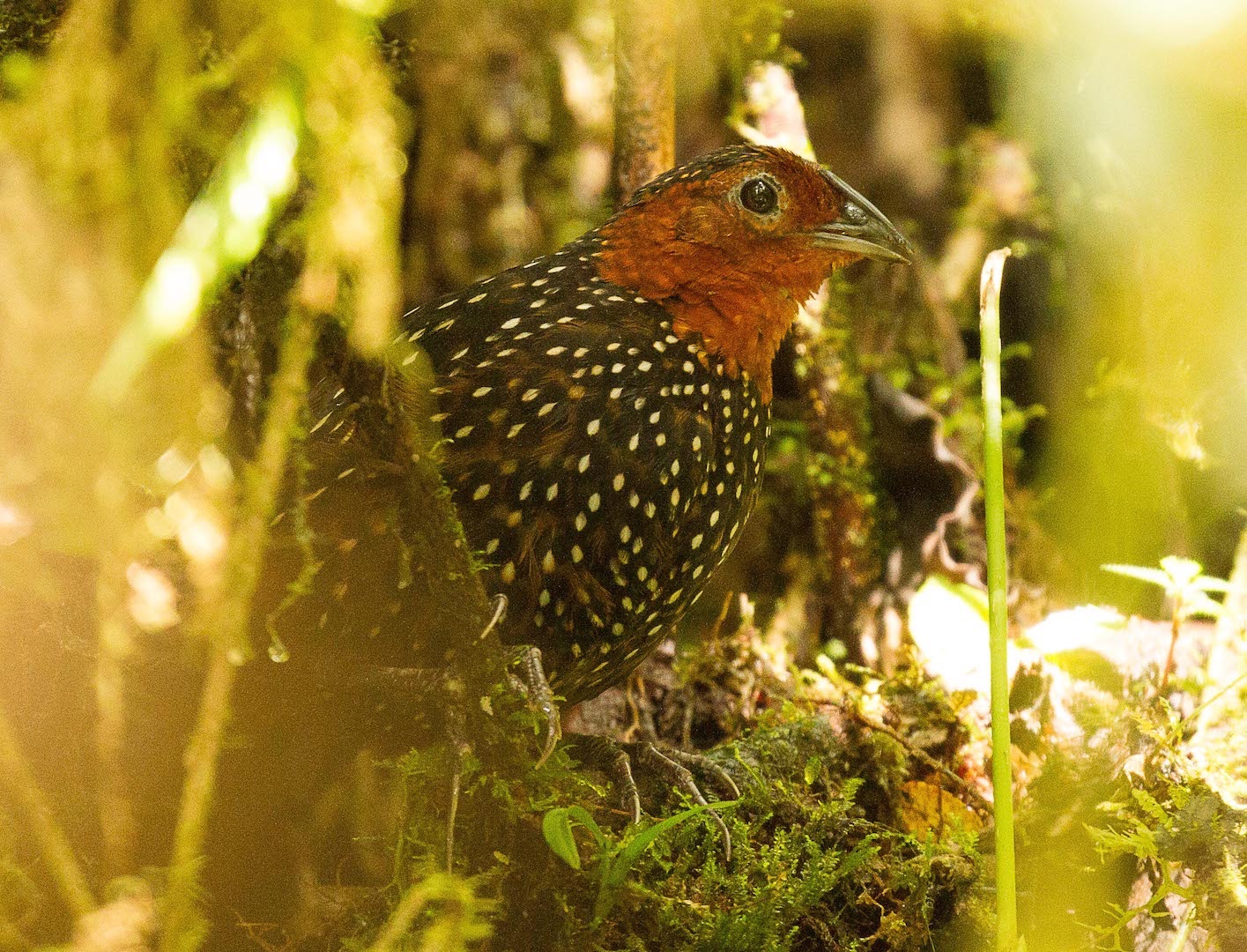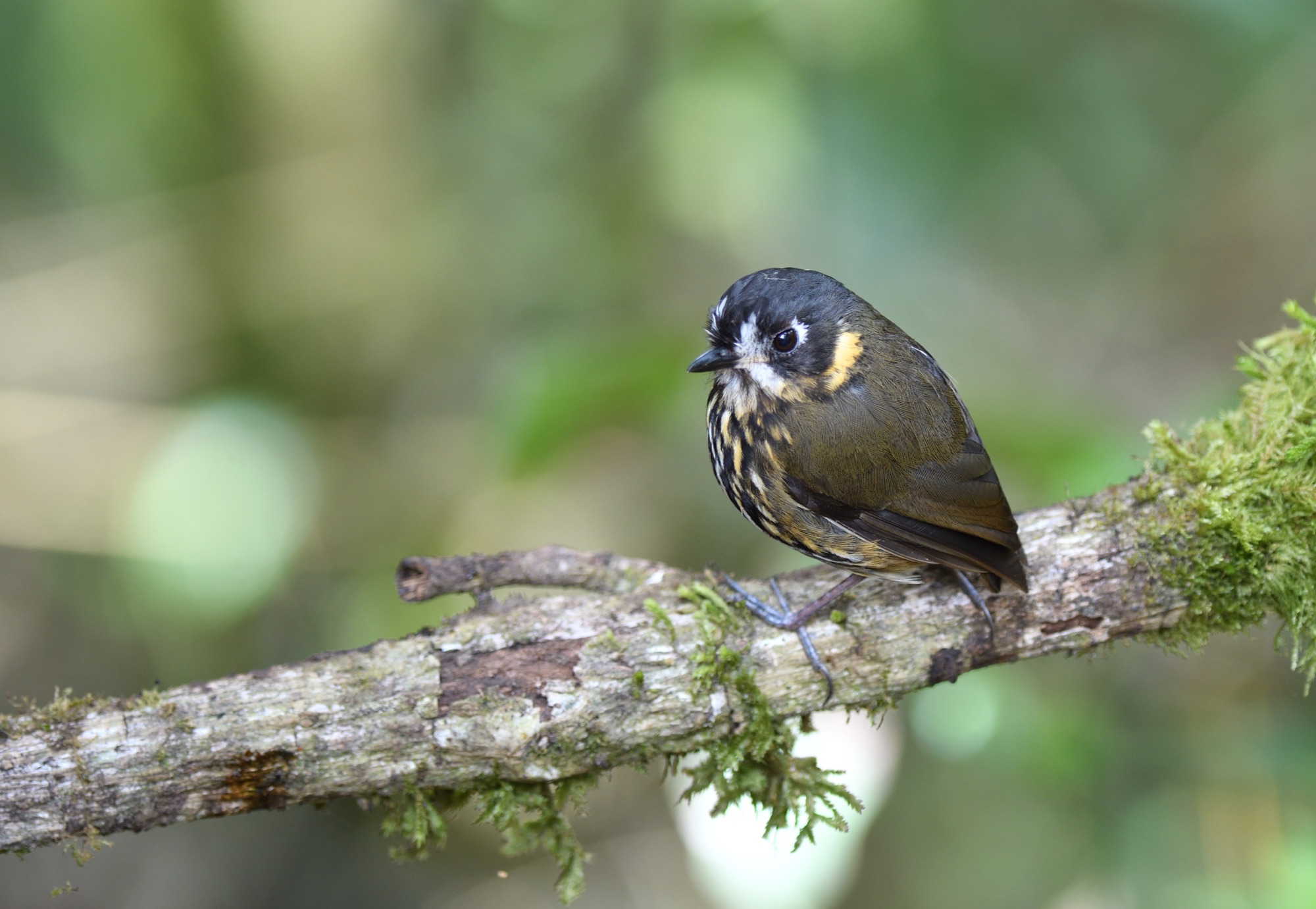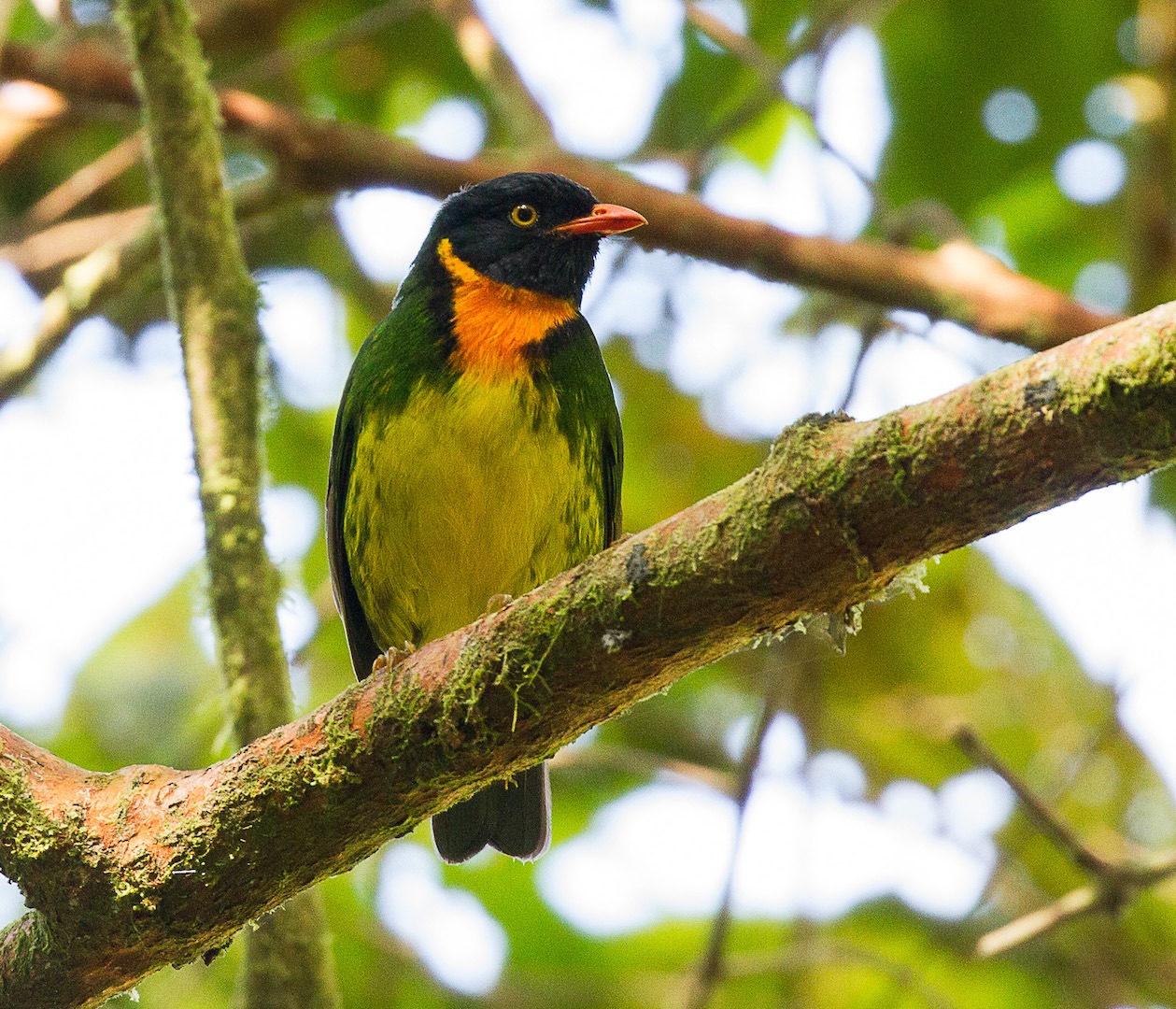COLOMBIA - ANDES & SANTA MARTA
Day 1 Arrive Bogota, Colombia
After our arrival in Bogota you will be met and transferred to our accommodation on the outskirts of this vast city. Night Bogota.
Day 2 Bogota and surrounding area (Eastern Andes)
There are a number of excellent birding sites around and within the city, so we shall take advantage of several of these and enjoy an easy day's birding and what will surely be a fantastic introduction to the incredible birdlife of this awesome country. Se we will first of all visit the wetland of La Florida about an hours drive from the hotel. Target species include Spot-winged Gallinule, Bogota Rail, Apolinar`s Wren, Golden-bellied Starfrontlet, Amethyst-throated Sunangel, Subtropical Doradito, Yellow-hooded Blackbird amongst others. Then we will drive for around 90 minutes to another area where species such as the rare endemics Turquoise Dacnis-Tanager and Black Inca can be found. Other species here include Andean Toucanet, Red-crowned Woodpecker, Andean Emerald, Steely-vented and Indigo-capped Hummingbirds, Ash-browed and Pale-breasted Spinetails, Silvery-throated Spinetail, Golden-faced Tyrannulet, Brown-bellied Swallow, Streaked Saltator, Blue-necked, Black-capped, Golden, Crimson-backed, Flame-faced and Scrub Tanagers, Moustached Brush-finch and Rufous-naped Greenlet. Working our way lower we will search for Bar-crested Antshrike, Rufous-tailed Hummingbird, White-vented Plumeleteer, the rare Red-billed Emerald, and the endemic Colombian Wren. Another valley is good for the endemic Apical Flycatcher and Velvet-fronted Euphonia, along with Scarlet-fronted Parakeet, White-bellied Antbird, Black-striped Sparrow and Gray Seedeater. We will return to our hotel later in the afternoon for a chance to rest and relax before dinner. Night in Bogotá.
Day 3 Chingaza National Park – Hummingbird Observatory
Early this morning we will venture into the hills just a short distance from the city to Chingaza National Park, an amazing area that leads up to some superb paramo habitat (3800m). Apart from the spectacular views we will soon have our first endemics in our sights. The short stunted trees and nearby paramo habitat encourages small mixed roving flocks and amongst these we will search for Rufous-browed Conebill, Silvery-throated Spinetail, Black-chested, Buff-breasted and Scarlet-bellied Mountain Tanagers, Red-crested Cotinga, Pale-naped Brush-Finch, Rufous Wren, Superciliaried, Black-eared, Black-headed and Oleaginous Hemispingus. Further searching of this excellent habitat could reveal delights such as Rufous and Tawny Antpittas, Green-bearded Helmetcrest, Purple-backed Thornbill, Glowing and the endemic Coppery-bellied Puffleg, White-throated Tyrannulet, Ash-colored and Mattoral Tapaculos, Black and Bluish Flowerpiercers, Golden-fronted Whitestart, Black-crested Warbler and Plushcap. We may even entice an Andean Pygmy-Owl to show itself, or if very lucky we could find Bronze-tailed Thornbill. Moving on from here we will check out an area of wetlands which is a reliable site for Bogota Rail as well as Spot-flanked Gallinule, Andean and if lucky Merida Speckled Teal, or even Noble Snipe.
In the afternoon we will head back down towards the city and visit the Hummingbird Observatory for Glowing Puffleg, Blue-throated Starfrontlet, Sword-billed Hummingbird, Black-tailed and Green-tailed Trainbearers and Mountain Velvetbreast among others. Night in Bogotá.
Day 4 Pereira - Otun Quimbaya - Montezuma (Central Andes)
We will take a short early morning flight to Pereira, and upon arrival we will drive for around an hour to the research centre at Otún Quimbaya. There will no doubt be a few stops along the way and a short walk along an open quiet road could give us several sought-after birds including the impressive Red-ruffed Fruitcrow, Inca Jay, Golden-plumed Parakeet and shy Cauca Guan in one of its last remaining strongholds. As we leave this area a few strategic stops along the way could have us look at a nearby tumbling river where we may find Torrent Duck, White-capped Dipper and Torrent Tyrannulet amongst others. Further birding closer to the lodge could produce species such as Wattled Guan, Flame-rumped Tanager and possibly Highland Motmot, while mixed feeding flocks will give us a good shot at the endemic Multicoloured Tanager as well as a host of other species such as Rusty-winged Barbtail, Red-faced Spinetail, Slaty Antwren, Marble-faced and Variegated Bristle-Tyrants, Rufous-breasted Flycatcher, Plumbeous-crowned Tyrannulet, Stiles's Tapaculo, Tropical Parula, White-winged Becard, Black-billed Peppershrike, Crested Ant-Tanager, and both Saffron-crowned and Fawn-breasted Tanagers. With luck we may come across one of the more tricky species such as Chestnut Wood-Quail, Moustached or Hooded Antpitta, Stile’s Tapaculo or Chestnut-breasted Wren. Depending how we feel we may go in search of Colombian Screech-Owl near to the lodge this evening. Night at Otún Quimbaya Lodge.
Day 5 Otun Quimbaya - Montezuma
We will spend the best part of the morning birding around Otún Quimbaya (1,800m) and check a new area for Fuertes's Parrot if we didn't see it yesterday. We might also find Grey-breasted Mountain-Toucan, Paramo Tapaculo, White-banded Tyrannulet, Golden-fronted Whitestart, Blue-backed Conebill, Blue-and-black and Golden-crowned Tanagers, Lacrimose and Buff-breasted Mountain-Tanagers, Black-backed Bush-Tanager and Slaty Brush-finch amongst many others.
After an early lunch we will head to the humid Choco region and amazing Montezuma, which is part of Tatamá National Park. Here we will look for a variety of Choco endemics and specialities, with none more special than the stunning Gold-ringed Tanager. Other species we will be on the lookout for as we explore a network of trails include Chestnut Wood-Quail, Blackish Rail, Cloud-forest Pygmy-Owl, White-tipped Sicklebill, Tawny-bellied Hermit, Violet-tailed Sylph, Brown Inca, Velvet-purple Coronet, White-tailed Hillstar, Purple-bibbed Whitetip, Empress Brilliant, Purple-throated Woodstar, Golden-headed Quetzal, Moustached Puffbird, Lanceolated Monklet, Toucan Barbet, Yellow-vented Woodpecker, Fulvous-dotted Treerunner, Buffy Tuftedcheek, Scaly-throated Foliage-gleaner, Bicolored Antvireo, Parker's Antbird, Yellow-breasted Antpitta, Chestnut-crowned Gnateater, Ocellated, Choco, Tatama Tapaculo, Bronze-olive Pygmy-Tyrant, Handsome and Lemon-browed Flycatchers, Scaled, Green-and-black, Barred and Orange-breasted Fruiteaters, Olivaceous Piha, Golden-winged, Club-winged, Striped and Golden-collared Manakins, Choco Vireo, Rufous-naped Greenlet, Beautiful Jay, White-headed, Sooty-headed and Sharpe's Wrens, and the localised Black-chinned Mountain-Tanager. We will spend the next 3 nights at Montezuma lodge.
Days 6 - 7 Montezuma
The fabulous reserve at Montezuma (2,600m) offers some fabulous birding and we will be spending three nights here so as to make the most of this special place. During our stay we will spend a day in the high zone followed by a day in the mid elevation and around the lower section. All this will enable us to see a wide variety of sought-after and very special species. We will mostly bird along the road and a big wide trail and the avian delights are endless with opportunities for Chestnut Wood-Quail, Blackish Rail, Barred Parakeet, Cloud-forest Pygmy-Owl, White-tipped Sicklebill, Wedge-billed Hummingbird, Violet-tailed Sylph, Brown Inca, Velvet-purple Coronet, Booted Racket-tail, Purple-bibbed Whitetip, Empress Brilliant, White-bellied and Purple-throated Woodstars, Golden-headed and Crested Quetzals, Moustached Puffbird, Lanceolated Monklet, Grayish Piculet, Toucan Barbet, Crimson-rumped Toucanet, Yellow-vented and Lita Woodpeckers, Fulvous-dotted Treerunner, Buffy Tuftedcheek, Scaly-throated Foliage-gleaner, Uniform Treehunter, Bar-crested Antshrike, Bicolored Antvireo, Parker's Antbird, Yellow-breasted Antpitta, Chestnut-crowned Gnateater, Ocellated, Choco & Nariño Tapaculos, plus a new species of Tapaculo, Bronze-olive Pygmy-Tyrant, Handsome and Lemon-browed Flycatchers, Scaled, Green-and-black, Barred and Orange-breasted Fruiteaters, Andean Cock-of-the-Rock, Olivaceous Piha, Golden-winged, Club-winged, Striped and Golden-collared Manakins, Choco Vireo, Rufous-naped Greenlet, Beautiful Jay, Gray-mantled, White-headed, Sooty-headed and Sharpe's Wrens, Munchique Wood-Wren, Orange-billed Nightingale-Thrush, Black Solitaire, Lemon-rumped, Flame-rumped, Black-and-gold, Gold-ringed, Purplish-mantled, Glistening-green, Multicoloured, Scrub, Rufous-throated, Flame-faced, Scarlet-and-white and Dusky-faced Tanagers, Crested Ant-Tanager, Black-chinned Mountain-Tanager, Golden-collared Honeycreeper, Indigo and Chestnut-bellied Flowerpiercers, Yellow-throated, Dusky and Yellow-green Bush-Tanagers, Black-winged Saltator, Tricolored (Choco) Brush-Finch, Golden-bellied (Choco) Warbler, Blue-naped, Chestnut-breasted and Yellow-collared Chlorophonias. Nights at Montezuma Lodge.
Day 8 Montezuma - Manizales (West Andes)
Our birding this morning will be along the main road and a short trail where we will target a number of special birds including the rare Yellow-headed Manakin, White-throated Spadebill, Golden-breasted Fruiteater, White-bellied and Purple-throated Woodstars, Booted Racket-tail, Whiskered Wren and the endemic Yellow-headed Brush-Finch. We will then possibly make a few roadside stops to search for any other missing dry-forest targets. By birding along the entrance road to several farms we can get a variety dry Cauca Valley birds.This is fairly easy birding and amongst some of the species we can expect are Dwarf Cuckoo, Spectacled Parrotlet, Bar-crested Antshrike, Apical Flycatcher, Grayish Piculet, Ultramarine Grosbeak, Scarlet-fronted Parakeets and Crested Bobwhites. From here we will then drive to Manizales and our comfortable hotel. Time permitting we may look at some hummingbrd feeders where we could see Western Emerald, Brown Violet-Ear, Purple-throated & White-bellied Woodstars, Fawn-breasted Brilliant, Andean Emerald and Booted Rackettail. Next 3 nights in Manizales.
Day 9 Rio Blanco Reserve (Central Andes)
This morning we will have a very early start to allow us to look for White-throated Screech-Owl, Rufous-banded Owl, Lyre-tailed Nightjar, Rufous-bellied Nighthawk and Common Potoo. We will then take breakfast at the Rio Blanco Reserve where we will be surrounded by dozens of hummingbirds. The majority of these will be Buff-tailed Coronets but we can also look for Tourmaline Sunangel, Fawn-breasted Brilliant, Speckled Hummingbird, Booted Racket-tail, Bronzy & Collared Incas, Brown, Lesser, & Sparkling Violetears, White-bellied Woodstar and Long-tailed Sylph. The Rio Blanco reserve is a superb area to bird and we have the full day to try and do this wonderful place justice. A scan of the tree tops may produce Black-billed Mountain Toucan, Sickle-winged Guan or the rare Rusty-faced Parrot, but it’s the mixed flocks that can really set pulses racing.
A walk into the reserve will start with a visit to a feeding area where we can get close views of the once almost impossible endemic Brown-banded Antpitta. Chestnut-crowned Antpittas are a little easier to see and as the day unfolds we also have chances for Bicoloured, Chestnut-naped and Slate-crowned Antpittas. The mixed flocks can hold numerous species and we will work through them in order to find such species as Golden-fronted Redstart, Pearled Treerunner, Barred Becard, Capped Conebill, Gray-hooded Bush Tanager, Blue-winged Mountain Tanager, Blue-and-black Tanager, Black-eared, Black-capped and Superciliaried Hemispingus, Grass-green Tanager, Montane Woodcreeper, Flammulated Treehunter, Strong-billed Woodcreeper, Rufous-crowned Tody-Tyrant, Plushcap, Buff-breasted Mountain Tanager, Ash-coloured, Blackish, Spillman's and the fabulous Ocellated Tapaculo and Streak-headed Antbird, a bamboo specialist.
Further searching should reveal Rusty-faced Parrot, Golden-plumed Parakeet, Black-billed Mountain-Toucan, Yellow-vented Woodpecker, Black-collared Jay, Streaked Xenops, Olive-sided Flycatcher, Black-capped Tyrannulet, Blue-capped Tanager, Smoky Bush Tyrant, Dusky Piha, Sharpe’s Wren, Yellow-billed Cacique, Mountain Wren, Ash-colored Tapaculo, Gray-breasted Wood Wren, Black-crested Warbler, Bar-bellied and Crimson-mantled Woodpeckers, Chestnut-capped Brush Finch, Gray-browed Brush-Finch, Purple-backed Thornbill and with luck the rare Masked Saltator. Sometimes there's a Stygian Owl staked out at a known day roost as well. In the evening at dusk we could try some of the owls again as well as Rufous-bellied Nighthawk and Lyre-tailed Nightjar. After what will certainly be a bird filled day we will return to Manizales. Night Manizales.
Day 10 Los Nevados NP - Jardin (Central Andes to West Andes)
We will once again leave our hotel early in order to be near the high paramo of Los Nevados National Park by breakfast (3,500m - 4000m). As we enjoy our picnic breakfast and the sun rises we will be perfectly positioned to start our highland birding. Golden-breasted Pufflegs and Viridian Metaltails will be overshadowed by the spectacular Rainbow-bearded Thornbill, while small roving flocks may include Golden-fronted Whitestart, Pale-naped Brush-Finch and the rare Black-back Bush Tanager. As we ascend higher we should have chances for Andean Pygmy-Owl as well as Black-chested Buzzard-Eagle, Sedge Wren, Paramo Seedeater, Plain-coloured Seedeater, White-browed Spinetail, Brown-backed Chat-Tyrant and White-chinned Thistletail. One of the highlights of this stunted mountainside is the delightful endemic Green-bearded (Buffy) Helmetcrest and we will look for this enchanting hummingbird on flowering bushes. Also here should be the vocal and often showy Tawny Antpitta alongside Stout-billed Cinclodes, Andean Tit-Spinetail, Crowned Chat-Tyrant and Many-striped Canastero. Moving back downhill slightly we might be lucky to find the rare Black-thighed Puffleg.
At mid day drive to Hotel Termales del Ruiz to see hummingbirds - Black-thighed Puffleg, Purple-backed Thornbill, Buffy Helmetcrest, Great Sapphirewing, Buff-winged Starfrontlet, Sword-billed Hummingbrid, and the odd-looking Avocet-bill. We will then work our way down the road slowly concemtrating our efforts from 3,500 - 2,500m. Other species possible today include Andean Teal, Andean Duck, Rufous-fronted Parakeet,Red-crested Cotinga, Paramo Tapaculo, Black-backed Bush-Tanager, Golden-crowned Tanager, Plumbeous Sierra-finch and more. Night in Manizales.
Day 11 Hacienda El Bosque - El Jardin
This morning we will set off back up into the mountains once again and visit the amazing Hacienda El Bosque. Another set of feeding stations here is currently attracting the stunning Crescent-faced Antpitta - something of a Holy Grail bird! Formerly it was one of the hardest to find antpittas but now it is relatively easy here! There's also a good hance of observing Rufous Antpitta here as well. Hummingbird feeders attract a variety of species including Sword-billed Hummingbird, Buff-winged Starfrontlet, Sparkling Violetear and Mountain Velvetbreast, whilst the surrounding forest is a good place to find Grey-breasted Mountain-Toucan. Our last visit i 2019 also found Barred Fruiteater and Paramo Seedeater here as well.
Once we are finished here we will set off toward El Jardin one of our most favourite towns in Colombia. We have a long drive ahead of us so we will depart mid-morning and head through the Cauca Valley to this beautiful town in the Western Andes. If we get there in time then we can look for Andean Cock-of-the Rock at a display area. Next 2 Nights at El Jardin.
Day 12 El Jardin - Ventanas Road (Western Andes)
The exquisite town of Jardin is a delightful base from which to explore the surrounding hills and its many special birds. With a picnic lunch we will travel up a bumpy track until we reach the top of one particular hill where we have chances to see the endangered endemic Yellow-eared Parrot. From here we will spend the rest of the day slowly walking downhill to try and connect with a multitude of species that could include such delights as Red-crested and sometimes Chestnut-crested Cotingas, the stunning White-capped Tanager, Purplish-mantled Tanager, Barred Fruiteater, Mountain Cacique, Golden-headed Quetzal, Slate-crowned and Chestnut-naped Antpittas, Ocellated Tapaculo, Tanager Finch, and roving flocks that will excite each and every one of us. There are several hummingbirds to look for including Mountain Velvetbreast, Tourmaline Sunangel, Collared Inca and possibly Sword-billed Hummingbird, while tanagers could include Golden-hooded, Blue-capped, Grass-green, Beryl-spangled, Purplish-mantled, Blue-and-Black and Lacrimose, Hooded and Buff-breasted Mountain Tanagers, With plenty of other species to keep us busy such as Black-billed Mountain-Toucan, Golden-fronted Redstart, Streak-throated Bush Tyrant, Slaty-backed, Rufous-breasted, and Yellow-bellied Chat-Tyrants, Masked Trogon, Ocellated Tapaculo, Barred Becard, Black-capped, White-banded, White-throated and White-tailed Tyrannulets, Streaked Tuftedcheek, Pearled Treerunner, Streaked Xenops, Rufous Spinetail, Smoke-coloured Pewee, Cinnamon Flycatcher, Pale-edged Flycatcher, Rufous-headed Pygmy Tyrant, Tanager Finch, Russet-crowned Warbler, Tanager Finch, Slaty Brush-Finch and Sharpe’s Wren. This will surely be a day to remember! If we have any energy we could try a spotlight a Rufous-banded Owl tonight. The evenings around the town square in Jardin can often be a hive of activity and entertainment and an experience not to be missed. Night in El Jardin.
Day 13 El Jardin - Medellin - Barranquilla
We can spend the early morning birding in El Jardín area. One option will be to visit a close Andean Cock-of-the Rock lek if we missed them before. On the outskirts of Jardin we can check an area that we have been lucky with Moustached Puffbird, Parker’s Antbird, and other species associated with these scrubby hillsides such as Rusty Flowerpiercer, Red-headed Barbet, Bar-crested Antshrike, Russet-backed Oropendola, Yellow-backed Oriole, Andean Solitaire, Golden-olive Woodpecker and maybe Yellow-throated Brush-Finch or White-collared Swifts. If we are lucky maybe even Yellow-eared Parrot. We will then head for an area where we hope to find the attractive Red-bellied Grackle. There should be a few other species around such as Russet-backed Oropendola, Yellow-backed Oriole and Andean Solitaire as well. We'll then drive to Rionegro airport and along the way look for Colombian Chachalaca, Greyish Piculet, Apical Flycatcher and Antioquia Wren. An afternoon flight from Medellin to Barranquilla will see us arrive in the early evening at our next lodge. Night in Barranquilla.
Day 14 Barranquilla - Salamanca Park (Caribe Lowlands)
We will be birding in the mangrove swamp and dry forest of Salamanca National Park this morning where possibilities include Blue-winged Parrotlet, Sapphire-bellied and Sapphire-throated Hummingbirds, Pied Puffbird, Golden-green Woodpecker, Yellow-chinned Spinetail, Stripe-backed Wren and Bicoloured Conebill amongst others. Once finished here we will drive to La Guajira/Riohacha arriving in time for dinner. Night at Riohacha.
Day 15 Los Flamencos National Park - Minca
At Los Flamencos where we will first check out an area of coastal dry scrub. A few specialities exist here and we will make an effort to find Rufous-vented Chachalaca, Crested Bobwhite, Pearl Kite, Crane Hawk, Grey-lined Hawk, Double-striped Thick-Knee, Green-rumped Parrotlet, Ruby Topaz, Buffy Hummingbird, Red-billed Emerald, Vermilion Cardinal, Chestnut Piculet, Pale-breasted and White-whiskered Spinetail, Slender-billed Inezia, Northern Scrub Flycatcher, Venezuelan Flycatcher, Black-crested and Black-backed Antshrike, White-fringed Antwren, Pearly-vented Tody-Tyrant, Pale-eyed Pygmy-Tyrant, Pale-tipped and Slender-billed Inezia, Trinidad Euphonia, Glaucous Tanager, Orinocan Saltator, Tocuyo Sparrow, Scrub Greenlet, Grey-Pileated Finch, Yellow Oriole, Black-faced Grassquit and possibly White-tailed Nightjar. Moving on to the tidal mudflats and bay we will look for American Flamingo, Roseate Spoonbill, Scarlet Ibis, Reddish Egret, Tricoloured Heron, Collared Plover and a variety of other shorebirds. Amongst the Royal Terns and Laughing Gulls we could find Cabot’s Tern and quite often a surprise or two.
We should also be able to find Yellow-headed and Northern Caracaras, plus Bare-eyed Pigeon, Tropical Gnatcatcher and Tropical Mockingbird. Nearby a small wooded reserve surrounded by mangrove will give us opportunities to find the rare Sapphire-bellied Hummingbird as well as Bicoloured Conebill, Least Grebe, Straight-billed Woodcreeper, Pied Puffbird, Golden-green Woodpecker and Bicoloured Wren. Moving on to various mangrove lined pools we can find a few shorebirds including Wilson’s and Collared Plovers, Short-billed Dowitcher, Semipalmated Sandpiper, Caspian, Gull-billed and Royal Terns, Brown Pelican, Roseate Spoonbill, Tricoloured, Cocoi, and Little Blue Herons, and in the scrub we could find Brown-throated Parakeet or Russet-throated Puffbird. After our extensive search of the area we will continue on to the town of Minca in the foothills of Santa Marta and a haven for birds. Night Hotel Minca.
Day 16 Santa Marta Mountains - Minca - El Dorado
We will spend most of the day birding the lowlands of the Santa Marta Mountains around Minca. So this morning after checking the hummingbird feeders we will take a leisurely stroll downhill on the lookout for Zone-tailed Hawk, King Vulture, Military Macaw, Keel-billed Toucan, Golden-winged Sparrow, Emerald Toucanet, Orange-crowned Oriole, Streaked, Yellow-margined, Panama and Venezuelan Flycatchers, Golden-olive Woodpecker, Scaled Piculet, Rosy Thrush-Tanager, Lineated Foliage-Gleaner, Southern Beardless-Tyrannulet and Trinidad Euphonia. We will also have chances for the recently split Santa Marta Antbird. A few stops along the way will see us search for species such as Collared Aracari, Whooping Motmot, Black-chested Jay, Bicoloured Wren, Yellow Oriole, Golden-fronted Greenlet, Rufous-breasted and Rufous-and-white Wrens, Crested Oropendola, Golden-winged Sparrow, Long-billed Gnatwren, and the endemic Black-backed Antshrike. There should be time to stop at an area of flowering bushes where we can hope to see another endemic - the superb Santa Marta Blossomcrown. Nearby we should pick up different species such as Santa Marta Brush-Finch, White-lored Warbler, Rusty Flowerpiercer, Black-headed Tanager, Blue-naped Chlorophonia, Green Violetear, Violet-crowned Woodnymph, Red-billed and Coppery Emeralds, Golden-winged Sparrow and if we are lucky the stunning Rusty-breasted Antpitta and much more difficult Santa Marta Tapaculo.
We will then continue on towards El Dorado Lodge looking for Pale-eyed Pygmy Tyrant, Streaked Saltator, White-collared Swift, Golden-olive Woodpecker, Yellow-tailed Oriole, Rufous-capped Warbler, Orange-billed Nightingale Thrush, Ochre-bellied Flycatcher and possibly Yellow-billed Toucanet or Sooty-capped Hermit.
We will arrive at our lodge around mid-afternoon and after settling in we can have a look at the hummingbird feeders where we hope to see endemic White-tailed Starfrontlet and Santa Marta Woodstar. A further exploration around the gardens and nearby trail that goes into the forest may reveal Red-billed Parrot, Golden-breasted Fruiteater, Santa Marta Foliage-gleaner, Santa Marta Tapaculo, Crested Oropendola, Black-hooded and Yellow-legged Thrushes, Colombian Brush-Finch, and possibly Grey-throated Leaftosser, or even the secretive Santa Marta Antpitta. Maybe even the Black-fronted Wood-Quail will be on the compost pile again! 2 nights at El Dorado Lodge.
Day 17 El Dorado
This morning we will have an early breakfast before attempting to find the rare and endemic Santa Marta Screech-owl. We will then continue on to the scenic heights of the San Lorenzo Ridge, a spectacular overlook of the Santa Marta mountain range and a stunning area to bird. There are many endemics up here and we will walk the quiet road in search of the Santa Marta race of Rufous Antpitta, Santa Marta Toucanet, Santa Marta Parakeet, Santa Marta Warbler, Santa Marta Mountain-Tanager, Santa Marta Bush-Tyrant, Santa Marta Brush-Finch, Yellow-crowned Redstart, White-lored Warbler, Rusty-headed and Streak-capped Spinetails, Strong-billed Woodcreeper, White-throated Tyrannulet, Yellow-bellied Chat-Tyrant, Blue-capped Tanager, Golden-bellied Grosbeak, Golden-bellied Fruiteater, Brown-rumped Tapaculo and more attempts to see Santa Marta Antpitta.
We will be out all day in search for other species such as Black-fronted Wood-Quail, Band-tailed Guan, Red-billed Parrot, Santa Marta Parakeet, White-tipped Quetzal, Groove-billed Toucanet, Golden-breasted Fruiteater, Rusty-headed Spinetail, Spotted Barbtail, Gray-throated Leaftosser, Strong-billed Woodcreeper, Rusty-breasted, Rufous Antpitta and hopefully Santa Marta Antpitta, Santa Marta Antbird, Brown-rumped and Santa Marta Tapaculo, Venezuelan and White-throated Tyrannulets, Black-throated Tody-Tyrant, Santa Marta Bush-Tyrant, Bang´s and Hermit Wood-Wrens, Orange-billed and Slaty-backed Nightingale-thrush, Black-hooded Thrush, White-tailed Starfrontlet, Santa Marta Woodstar, Black-backed Thornbill, Yellow-crowned Whitestart, White-lored and Santa Marta Warblers, Santa Marta (Black-cheeked) Mountain-Tanager, and both Colombian and Sierra Nevada Brush-Finch. Night at El Dorado Lodge.
Day 18 El Dorado – Minca - Bogota
If we failed to see Santa Marta Screech-Owl yesterday then we can have another try this morning. We will then take a slow walk downhill looking for any species we may have missed yesterday. Mixed flocks can always turn up a few surprises but its our aim to find all the available endemics of this unique area. Species easier at a slightly lower elevation include Scaly-naped Parrot, White-tipped Quetzal and Santa Marta Foliage-Gleaner, whilst we have further chances for Lined Quail-Dove, Rusty-breasted Antpitta, Santa Marta Tapaculo, and with luck Coppery Emerald. SAdly we will have to tear ourselves away from this awesome area and head to the airport for our afternoon flight back to Bogotá and transfer to a conveniently located hotel for the night. Night in Bogota.
Day 19 End of Tour
Transfer to the airport for international flights home and conclusion of a wonderful tour.

